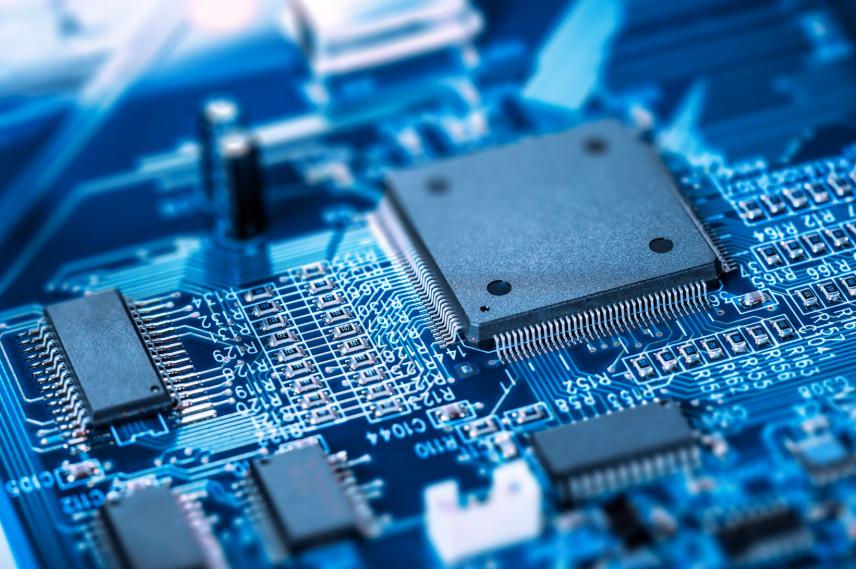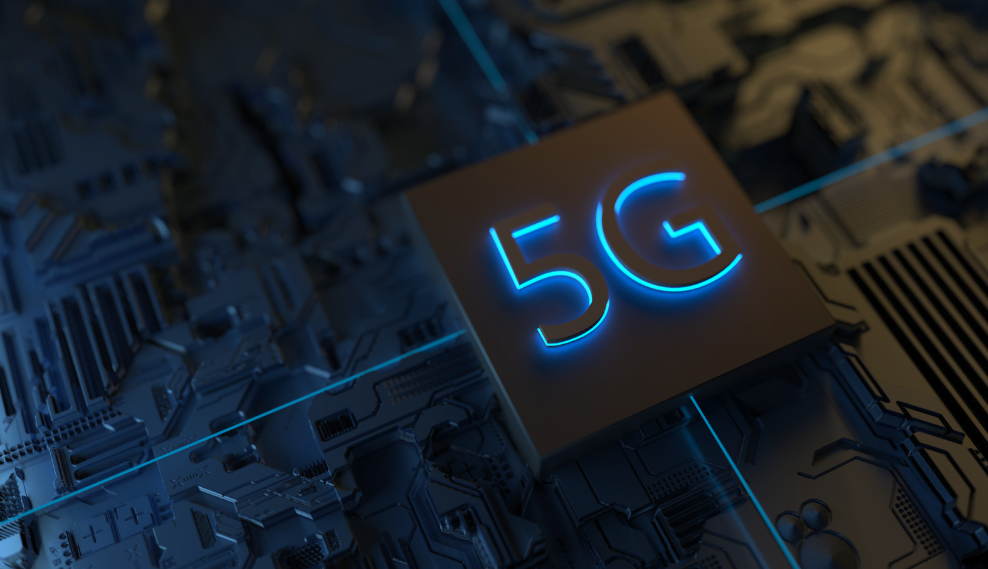How Microchips Are Powering the Internet of Things (IoT)

More from the Category
In today's era of technological innovation, the Internet of Things (IoT) is revolutionizing the way we interact with devices, from smart homes to connected cars and beyond. Central to this transformation is a small yet extraordinary component: the microchip. These silicon marvels power the seamless connectivity and intelligent functionalities that define the IoT, enabling everything from real-time data exchange to automated decision-making. As the backbone of this interconnected ecosystem, microchips are driving advancements that enable seamless connectivity and intelligent functionalities shaping the landscape of IoT.
The Emergence of IoT
The Internet of Things (IoT) is an expansive network of devices equipped with sensors, software, and cutting-edge technologies that enable seamless data collection, processing, and exchange. This interconnected ecosystem spans across a wide array of applications, from healthcare—enabling remote patient monitoring and personalized treatments—to agriculture, where precision farming optimizes resource usage and crop yields. In manufacturing, IoT drives smart factories with predictive maintenance and streamlined operations, while in transportation, connected vehicles and intelligent traffic systems enhance efficiency and safety. Central to all these advancements are microchips, the foundational components that provide the computational power and connectivity needed to transform raw data into actionable insights, making IoT a cornerstone of modern innovation.
Microchips: The Foundation of IoT
At the core of every IoT device is a microchip, commonly referred to as an integrated circuit. These marvels of modern engineering condense millions or even billions of transistors onto tiny silicon wafers, enabling them to perform complex computations at incredible speeds. Despite their compact size, microchips are the powerhouse that brings IoT devices to life, acting as the brains behind their intelligent functionality. Beyond processing power, microchips are equipped with specialized capabilities, such as low-power consumption for extended battery life, built-in wireless communication modules for seamless connectivity, and advanced security features to safeguard data. As IoT continues to evolve, innovations in microchip technology—such as edge computing capabilities, AI integration, and energy-harvesting designs—are further propelling the scalability and versatility of IoT applications, making these components indispensable in building a smarter, more connected world.
Crucial Elements within IoT

At the core of IoT devices are several essential components, each playing a critical role in enabling their functionality and connectivity.
• Central Processing Unit (CPU): Acting as the brain of the microchip, the CPU executes instructions, processes data, and ensures the seamless operation of IoT devices. With advancements like multi-core processors and AI-optimized architectures, CPUs are becoming more efficient and capable of handling complex tasks.
• Memory (RAM and ROM): Memory provides both temporary (RAM) and permanent (ROM) storage for data and instructions. Emerging memory technologies, such as MRAM and RRAM, are enhancing data processing speeds while minimizing energy consumption.
• Sensors: Sensors collect environmental data—such as temperature, humidity, light, motion, and air quality—serving as the eyes and ears of IoT devices. Innovations in nano-sensors and multifunctional sensor arrays allow for enhanced precision and integration into smaller devices.
• Wireless Communication Modules: IoT microchips often integrate wireless communication technologies, including Wi-Fi, Bluetooth, and 5G, enabling seamless connectivity with other devices and the internet.
• Power Management Circuits: Efficient power management circuits optimize energy usage, extending battery life in IoT devices. Energy-harvesting solutions, such as solar and piezoelectric technologies, are increasingly integrated to power devices in low-energy environments.
These components enable IoT microchips to support a wide range of applications across industries:
• Smart Home Devices: From smart thermostats and lighting systems to security cameras and voice assistants, microchips drive the automation, intelligence, and connectivity of home systems.
• Wearable Technology: IoT microchips power fitness trackers, smartwatches, and medical wearables, enabling them to monitor health metrics, track activity, and deliver real-time data for improved health management.
• Industrial IoT (IIoT): In manufacturing, IoT microchips are critical for monitoring equipment performance, optimizing production processes, ensuring quality control, and enabling predictive maintenance. Edge computing capabilities within IIoT devices further enhance real-time decision-making.
• Smart Cities: IoT microchips contribute to smart city solutions, such as traffic management, energy-efficient lighting, waste management, and public safety initiatives. They improve urban efficiency, reduce environmental impact, and enhance residents' quality of life.
As IoT continues to evolve, innovations in microchip technology, such as AI integration, edge processing, and advanced security protocols, are unlocking new possibilities, making IoT devices more intelligent, efficient, and reliable than ever before.
Challenges That Need Attention in IoT Microchips
As IoT technology continues to expand, several critical challenges must be addressed to unlock its full potential:
• Security: With the proliferation of IoT devices, robust security measures are essential to protect both the devices and the vast amounts of data they generate. Advanced encryption, hardware-based security modules, and real-time threat detection are increasingly being integrated into IoT microchips to counter evolving cybersecurity risks.
• Compatibility: Interoperability remains a key challenge as IoT devices from different manufacturers often operate on varied protocols. Efforts like the development of universal standards (e.g., Matter protocol) aim to ensure seamless communication and interoperability across diverse IoT ecosystems.
• Power Usage: Many IoT devices rely on batteries, making power efficiency a top priority. Innovations in ultra-low-power microchips, energy-harvesting technologies, and adaptive power management systems are crucial for extending battery life and reducing environmental impact.
• Data Handling: The sheer volume of data generated by IoT devices poses challenges for storage, processing, and analysis. New advancements in edge computing, data compression, and distributed cloud storage are helping address these issues, ensuring real-time insights and reduced reliance on centralized data centers.
Tech Leaders Driving IoT Microchip Innovation
The Internet of Things (IoT) relies on the ingenuity of microchip manufacturers, whose innovations enable seamless connectivity and intelligent functionalities. Here’s a closer look at the leading companies driving IoT advancements:
ARM Holdings
ARM Holdings is the cornerstone of IoT architecture, providing energy-efficient designs for countless devices. Their Cortex-M series processors are renowned for delivering low-power performance, which is essential for edge computing. By enabling data to be processed at the source, ARM’s technology reduces latency and enhances the efficiency of IoT systems, making it a critical player in this ecosystem.
Intel
Intel’s contribution to IoT lies in high-performance computing solutions that address industrial and enterprise needs. Its Atom and Xeon processors are optimized for real-time data analysis and industrial IoT (IIoT) applications. These processors power everything from smart factories to healthcare systems, providing the computational heft needed for large-scale IoT deployments.
Qualcomm
Qualcomm stands out for its focus on wireless communication and mobile-first IoT solutions. Its Snapdragon processors and QCS chipsets integrate advanced connectivity technologies, including 5G, Wi-Fi, and AI capabilities. Qualcomm’s innovations ensure IoT devices remain interconnected, enabling seamless operation across diverse environments, from smart cities to wearables.
Broadcom
Broadcom specializes in networking and connectivity solutions, delivering essential technologies like Wi-Fi and Bluetooth for IoT devices. These innovations are critical for ensuring reliable communication between devices in smart homes, industrial systems, and beyond.
Texas Instruments (TI)
Texas Instruments is a leader in analog and embedded processing solutions. Their SimpleLink wireless MCU family is widely used for IoT applications requiring low power consumption and robust connectivity, making them ideal for battery-operated devices like sensors and wearables.
STMicroelectronics
STMicroelectronics is at the forefront of IoT innovation, offering STM32 microcontrollers and advanced sensor platforms. These solutions enable diverse applications, including smart home devices, healthcare monitoring systems, and automotive technologies, cementing ST’s position as a key IoT player.
NVIDIA
NVIDIA brings AI-driven solutions to IoT through its Jetson platform, which powers applications such as autonomous vehicles, robotics, and smart cameras. By integrating AI capabilities directly into IoT devices, NVIDIA enables real-time decision-making and predictive analytics at the edge.
NXP Semiconductors
NXP specializes in edge processing and secure IoT applications. Their i.MX processors combine high performance with localized data processing, enhancing privacy and reducing latency. NXP’s focus on automotive IoT and smart city applications has made it a leader in this space.
Samsung
Samsung combines IoT processors and memory solutions to power smart appliances, wearables, and connected devices. With platforms like Exynos and Artik, Samsung integrates high performance with energy efficiency, supporting a wide range of IoT applications in consumer electronics.
Renesas Electronics
Renesas is known for its low-power microcontrollers and energy-efficient AI-driven solutions. These innovations are particularly valuable for industrial IoT and smart city applications, where power efficiency is critical to sustainability and cost-effectiveness.
These companies are not only driving IoT innovation but also addressing critical challenges such as security, compatibility, and power efficiency. Through continuous advancements in microchip technology, they are shaping the future of a smarter, more connected world.
Upcoming Trends in IoT Microchips

• Edge Computing: By enabling IoT devices to process data locally at the "edge" of the network, edge computing reduces latency, enhances data privacy, and improves operational efficiency. This trend is driving the development of microchips with built-in AI capabilities tailored for edge environments.
• Artificial Intelligence (AI): AI-powered microchips are transforming IoT devices by enabling on-device machine learning, real-time decision-making, and predictive analytics. These chips make IoT devices smarter and more autonomous, opening up possibilities in applications like smart healthcare, autonomous vehicles, and industrial automation.
• 5G Connectivity: The widespread deployment of 5G networks is revolutionizing IoT by enabling faster, more reliable communication with minimal latency. This unlocks new opportunities in areas such as real-time remote monitoring, autonomous drones, and advanced robotics.
• Quantum-Ready IoT: As quantum computing technologies mature, IoT microchips may incorporate quantum-resistant cryptographic algorithms to ensure long-term security in a post-quantum world.
• Environmental Sustainability: IoT microchips are increasingly designed with sustainability in mind, featuring recyclable materials, energy-efficient designs, and reduced manufacturing emissions to align with global environmental goals.
By addressing these challenges and embracing emerging trends, IoT microchips will continue to evolve as the backbone of a smarter, more connected, and sustainable future.
Driving IoT Innovation and Connectivity
Microchips are the backbone of the Internet of Things, enabling seamless connections across a vast network of devices that enhance and simplify our daily lives. As IoT technology continues to evolve, so too will the capabilities of microchips, driving groundbreaking innovations and reshaping industries. From powering smart homes and wearable technology to revolutionizing healthcare, transportation, and beyond, these components are at the heart of a smarter, more connected world. Recognizing the pivotal role of microchips within the IoT ecosystem allows us to appreciate the incredible progress they enable.
If you’re looking for electronic components, Microchip USA is your trusted partner for sourcing even the most hard-to-find parts at the best prices.
Contact us today to learn how we can help meet your needs!


